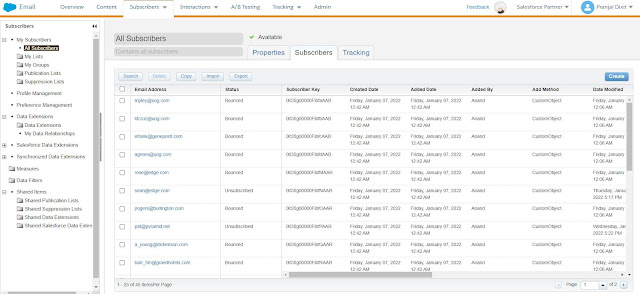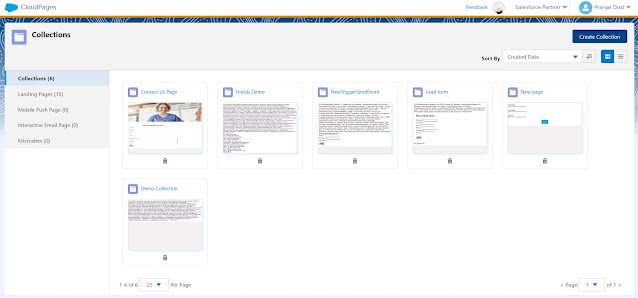Important Terms in Salesforce Marketing Cloud
Marketers come across some important terms/options while using Marketing Cloud platform which help them in achieving the desired result.
Let's have a look into some of the important terms which come under
1) Subscriber Key
- In Email Studio, contacts are identified by the Subscriber Key, which becomes the Contact Key in Contact Builder. The Subscriber Key is the primary key for your subscribers and allows you to identify subscribers with a value that you choose.
Use a Subscriber Key to:
- Maintain multiple sets of subscriber attributes for a single email address. For example, if a family shares an email address, you can use a Subscriber Key to uniquely identify each member of the family.
- Deciding on a Subscriber Key is a crucial business direction that must be kept consistent throughout your entire Marketing Cloud operation. Be sure to establish the Subscriber Key with every data extension created through the send relationship. The Subscriber Key must be present in every sendable data extension.
2) All Subscriber List
- The All-Subscriber list is considered the master list of records for the Marketing Cloud Email Studio account.
- Every subscriber in your account appears in the All-Subscribers List. Subscribers added to a subscriber list join the All-Subscriber list at the same time.

- Subscribers stored in the data extensions join the All-Subscriber list when you send your first message to that subscriber.
3) CAN-SPAM
- The CAN-SPAM Act imposes stricter requirements on Commercial email than on Transactional email. Complying with these requirements protects you from CAN-SPAM litigation and demonstrates your commitment to provide relevant customer messaging.
- The CAN-SPAM act requires that Commercial emails, whose primary purpose is to deliver commercial content, meet the following criteria:
- Accurately identify the sender in the header information.
- Use a subject line that accurately represents the content of the email.
- Identify the message as an advertisement, unless you have express consent (opt-in) from the subscriber.
- Includes your physical mailing address.
- Provide a mechanism to opt-out. You don't require a subscriber to log in or visit more than a single page to unsubscribe.
- Honor opt-out requests promptly. You must process an unsubscribe request within 10 days and your unsubscribe mechanism must be operational for at least 30 days after the mailing.
4) Personalization String
- Personalization strings, also known as merge fields, work as a personalized tool for Salesforce Marketing Cloud (SFMC).
- The Marketing Cloud processes each of these strings individually for each subscriber at the time of sending the email.
- These strings are used extensively to include values from profile attributes, system attributes and data extension attributes.
- It can even be included within the subject line, preheaders along with content areas of the email.
5) CloudPages
- CloudPages in Marketing Cloud is used to create and publish targeted marketing content to customers across multiple channels.
- Use the CloudPages editor to build a collection of content, then optimize your content for distinct mobile, social and web experiences. Publish content immediately or schedule it to publish later. Then, monitor published content to gauge its performance across each channel.
Cloud Pages can be accessed by using the below mentioned path:
Login into SFMC > Web Studio > CloudPages

- CloudPages supports publishing to these channels:
- Landing Pages
- Mobile Push Pages
- Microsites